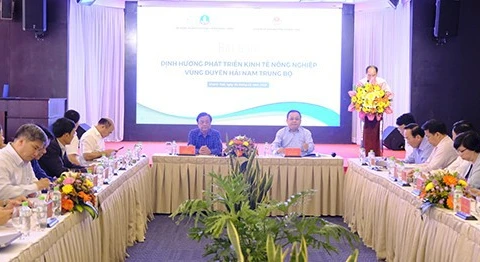HCM City (VNA) – Proper planning, brand positioning, and environmental protection are key matters in the development of Vietnam’s urban tourism, according to experts.
In Vietnam, the urbanisation rate has reached nearly 40%, with over 860 urban areas. The country has numerous urban areas, especially coastal cities or key tourist destinations like Ho Chi Minh City, Da Nang, Nha Trang, Phan Thiet, Vung Tau and Phu Quoc.
However, not all cities are tourist destinations, even though most have outstanding tourism potential. To improve tourism competitiveness and attractiveness, cities with strengths in tourism development must create and position a brand.
According to Nguyen Thu Hanh, President of the Science Union for Sustainable Tourism Development, brand positioning is one of the important strategies for cities with a focus on tourism.
Vung Tau city, for example, is rich in advantages such as convenient traffic locations, seaports, a large oil and gas centre, a four-season climate, and beautiful beaches.
This urban area also converges different cultures through religious monuments, churches, communal houses, and pagodas.
Hanh described Vung Tau as a "smart, modern and dynamic coastal city" with a system of industrial parks, high-tech zones, event centres, festivals, entertainment, and shopping operating on a digital platform.
Phu Quoc, located on the southwest coast, is considered a centre of eco-tourism and high-class beach resorts. With around 150km of coastline, the length of beaches suitable for tourism development is about 50km.
In recent years, experts have warned that coastal cities are at risk of sea level rise and unusual natural disasters due to climate change.
In response, architects Nguyen Viet Huy and Do Dinh Trong, from the Hanoi University of Civil Engineering, have proposed measures to minimise the harmful effects of natural disasters and develop stable technical and economic-tourism infrastructure systems that can adapt to climate change.
To achieve this, it is necessary to think differently and have a more open and positive view of climate change. Building construction plans should be based on integrated planning that promotes the socio-natural potential of the region while adapting to climate change.
Additionally, rational exploitation and strengthening solutions are essential to manage and use freshwater resources and protect coastal lands, sea mouths, and estuaries.
Associate Professor Pham Trung Luong, Vice President of the Vietnam Association for the Protection of Marine Resources and Environment and a member of the National Planning Advisory Group, emphasised the importance of promoting sustainable marine tourism urban development.
To meet this, he recommended reviewing and adjusting the planning of existing sea tourism urban areas, especially for coastal spaces.
Separate services, shopping, and entertainment areas should be planned with little impact on the lives of residents, ensuring that tourism activities can take place 24/7, thereby promoting the development of the urban night economy, in which tourism will be the core./.

























